As ultrasound is being used in more fields of medicine, the ways it can be used is changing at a rapid pace. Far more than a mere diagnostic tool, ultrasound is developing into a mode of treatment itself, from assisting doctors in making decisions as a condition progresses to changing the way pain treatment is thought of. Maverick Medical Education marvels at the ways ultrasound technology has been applied in more ways over the past few years and looks forward to how it will continue to change the practice of all aspects of medicine in the years to come.
Reduction of Opioid Use
Despite the accessibility to research of the dangers of opioid use and addiction, there are still 91 people who die from opioid overdoses daily across the United States, according to the CDC. Whether from surgery or an injury, opioids are still commonly prescribed and overused, causing the ongoing challenges. There are a fair number of medical staff, like our team at Maverick Medical Education, who want to reduce the use of opioids in treating pain, not by ignoring it, but by finding alternative, safer methods of treating and dealing with pain.
Ultrasound Technology
At Boston Children’s hospital, researchers have combined the same desire of finding alternative methods of treating pain with the use of ultrasound technology. They first developed liposomes, “artificial sacs that are micrometers in size,” and filled them with nerve-blocking drugs. These liposomes are injected into the body, as close to the pain site as possible. When pain relief is needed, ultrasound waves open up the surface of the liposome which is made of lipids and ultrasound sensitive sono-sensitizers. The nerve-blocking drug is released “into the surrounding tissue or onto the adjacent nerve, reducing pain. Originally, these methods were used with photodynamic therapy, but ultrasound waves can penetrate much deeper into the body allowing for the pain relief to be much better tailored to the patient’s needs. By getting closer to the pain site, relief is more effective and recovery becomes more efficient as well.
Further Developments
As ultrasound becomes more prevalent in clinical settings and as the technology reaches a more economical price point, in theory, these liposomes would be injected in the clinical setting, then a patient could go home with accessibility to a nearby clinic for the ultrasound assistance or with a portable ultrasound machine and instructions on how to use the device themselves. The home method would be a great benefit to recovering patients as they are able to manage pain as they rest and recover in a comfortable setting. Not only would patients feel empowered in the ability to manage this pain, but this method is non-invasive and a safe alternative to opioid prescriptions. These liposomes are currently able to be activated by ultrasound for up to three days after injection, allowing for substantial recovery before needing to come back in for further pain management assistance.
Maverick Medical Education is inspired by this application of ultrasound technology. To learn more about proficient use of ultrasound technology, see our course offerings on Point of Care Ultrasound. To learn more about the pain relief methods we teach, see our courses on Chronic Pain and the options of our Regional Anesthesia course. For other questions, contact us today.

